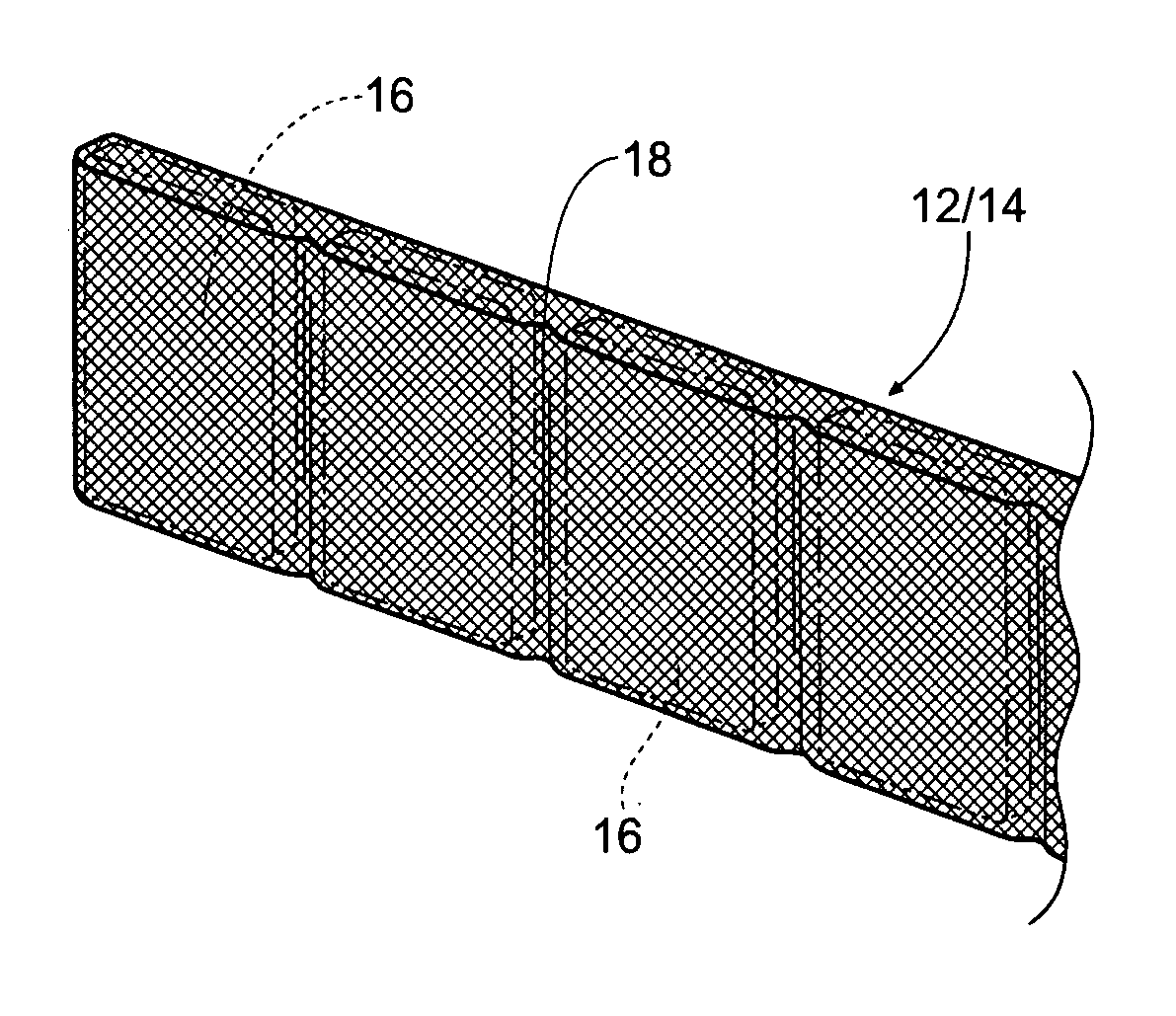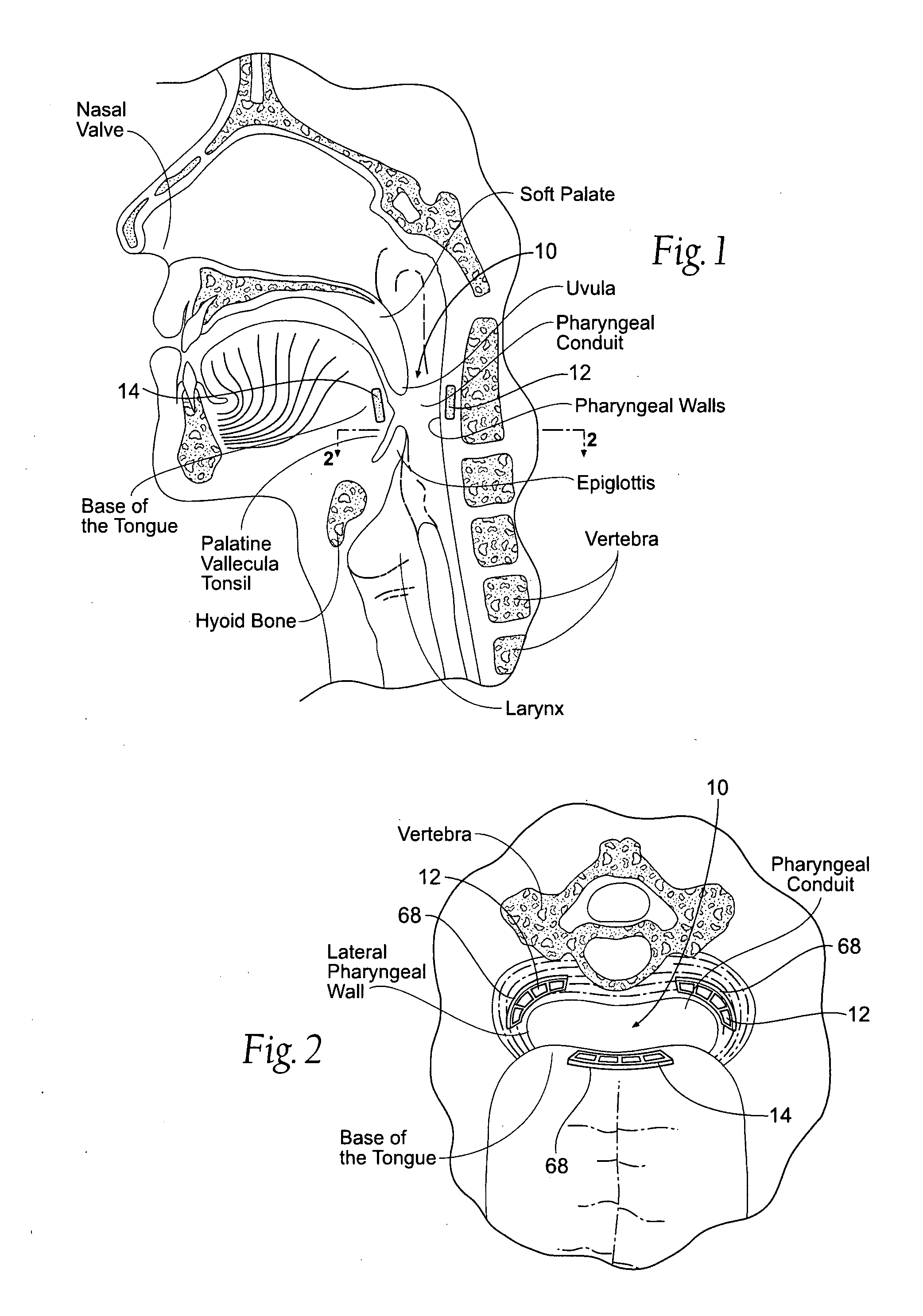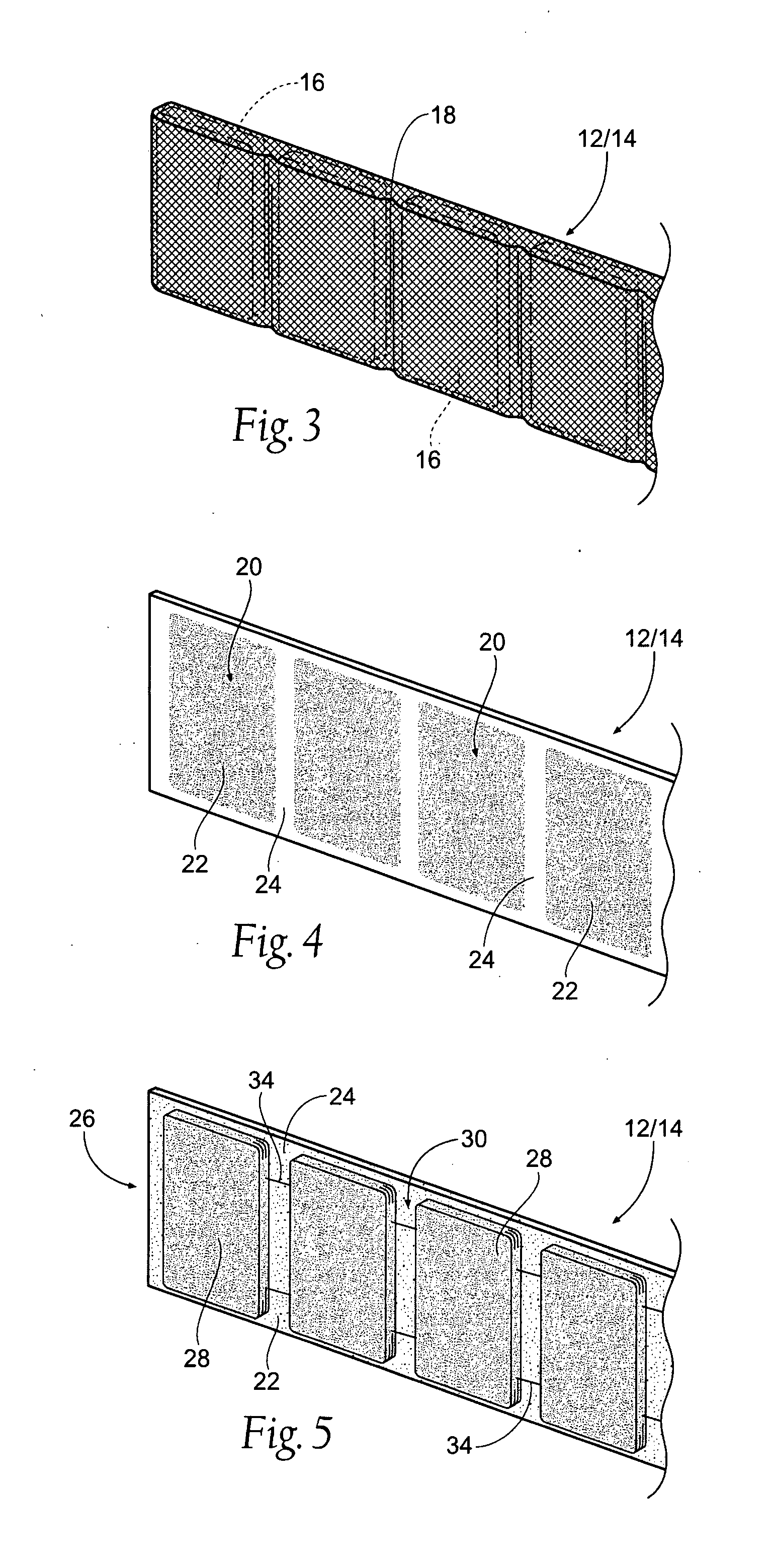Devices, systems, and methods to fixate tissue within the regions of the body, such as the pharyngeal conduit
a technology of pharyngeal conduit and tissue fixation device, which is applied in the field of devices, systems and methods to fix tissue within the regions of the body, can solve the problems of affecting the quality of life of patients, and affecting the effect of treatment
- Summary
- Abstract
- Description
- Claims
- Application Information
AI Technical Summary
Benefits of technology
Problems solved by technology
Method used
Image
Examples
example 1
Unshielded Core
[0113]FIG. 14A shows a core 48 comprising a permanent magnet measuring 40 mm×40 mm×25 mm (i.e., a volume of 40,000 mm3). FIG. 14B shows the total flux density distribution on the YZ plane, based upon finite element modeling, of the magnetic field generated by the permanent magnet. FIG. 14B shows the magnetic field emanating in all directions in the YZ plane about the magnet. FIG. 14C shows the magnitude of the Z component of flux density (Bz) taken at increasing distances from the top magnet surface along its center line. FIG. 14C generally shows a bell shaped curve, with a maximum Bz(T) of 0.6 at a distance of about 62 mm from the magnet surface, with gradual increases with decreasing distances and gradual decreases with increasing distances.
example 2
Shielded Core
[0114]FIG. 15A shows a core 48 comprising a permanent magnet smaller than the magnet of Example 1, measuring 30 mm×30 mm×20 mm (i.e., having a lesser volume of 18,000 mm3). The magnet has been placed within a flux shield 50. The flux shield comprises a box made from a soft ferromagnetic material. The box covers all but one pole surface of the permanent magnet.
[0115]FIG. 15B shows the total flux density distribution on the YZ plane, based upon finite element modeling, of the magnetic field generated by the permanent magnet when housed within the box. FIG. 15B shows that the presence of the ferromagnetic material of the box significantky alters the distribution pattern of the flux density of the field on the YZ plane. The magnetic field is demonstrably focused in the direction of the field that is not shielded by the ferromagnetic material. FIG. 15C shows the magnitude of the Z component of flux density (Bz) taken at increasing distances from the unshielded pole surface...
example 3
Alternative Shielded Magnets
[0117]FIGS. 16A and 16B show alternative embodiments of magnetic cores 48 comprising permanent magnets with flux shields 50 of soft ferromagnetic materials. Finite element analysis of these alternative embodiments show the focused flux density distribution shown in FIG. 15B, as well as the spike-curve configuration, shown in FIG. 15C, of the Z component of flux density (Bz) taken at increasing distances from the unshielded magnet pole along its center line.
PUM
 Login to View More
Login to View More Abstract
Description
Claims
Application Information
 Login to View More
Login to View More - R&D
- Intellectual Property
- Life Sciences
- Materials
- Tech Scout
- Unparalleled Data Quality
- Higher Quality Content
- 60% Fewer Hallucinations
Browse by: Latest US Patents, China's latest patents, Technical Efficacy Thesaurus, Application Domain, Technology Topic, Popular Technical Reports.
© 2025 PatSnap. All rights reserved.Legal|Privacy policy|Modern Slavery Act Transparency Statement|Sitemap|About US| Contact US: help@patsnap.com



